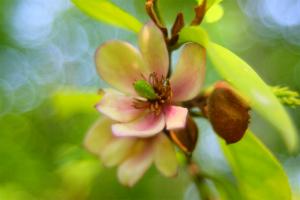How to Use NPK for Potted Plants
NPK, or nitrogen, phosphorus, and potassium, are essential nutrients that potted plants need to thrive. These macronutrients play a crucial role in plant growth and development. However, using NPK on potted plants can be tricky, especially for beginners. In this article, we will discuss how to use NPK for potted plants effectively.
Step 1: Choose the right type of fertilizer
The first step in using NPK for potted plants is selecting the right type of fertilizer. There are many different types of fertilizers available, and choosing the right one can make all the difference!
If your potted plants are flowering plants, look for a fertilizer that is high in phosphorus. If your potted plants are foliage plants, look for a fertilizer that is balanced in all three macronutrients.
It's also important to consider the pH level of your soil. If your soil is too acidic, choose a fertilizer that is alkaline. If your soil is too alkaline, choose a fertilizer that is acidic.
Step 2: Determine the appropriate amount of fertilizer
The next step is determining the appropriate amount of fertilizer to use. Over-fertilizing your potted plants can be harmful, so it's important to use the correct amount.
Always follow the instructions on the fertilizer package carefully. In general, you should use about 1 tablespoon of fertilizer per gallon of soil, but this can vary depending on the type of plant and fertilizer you are using. If you are unsure, start with a smaller amount and increase gradually over time.
Step 3: Apply the fertilizer
Now that you have selected the right fertilizer and determined the appropriate amount, it's time to apply it to your potted plant.
There are a few different ways to apply fertilizer, including:
Mix the fertilizer with water and pour the solution onto the soil
Add the fertilizer directly to the soil and water as usual
Use slow-release fertilizer pellets
When applying the fertilizer, be sure to spread it evenly throughout the soil and avoid getting it on the leaves or stem of the plant.
Step 4: Monitor your plants
Once you have applied the fertilizer, it's important to monitor your potted plants carefully. Look for signs of over or under-fertilization, such as yellowing leaves or stunted growth.
If you notice any issues, adjust the amount or frequency of your fertilizer application accordingly.
Conclusion
NPK is an essential nutrient for potted plants, but it can be tricky to use correctly. By following these steps, you can ensure that your potted plants receive the proper amount of nutrition and grow healthy and strong.

 how many times do yo...
how many times do yo... how many planted tre...
how many planted tre... how many pine trees ...
how many pine trees ... how many pecan trees...
how many pecan trees... how many plants comp...
how many plants comp... how many plants can ...
how many plants can ... how many plants and ...
how many plants and ... how many pepper plan...
how many pepper plan...





























